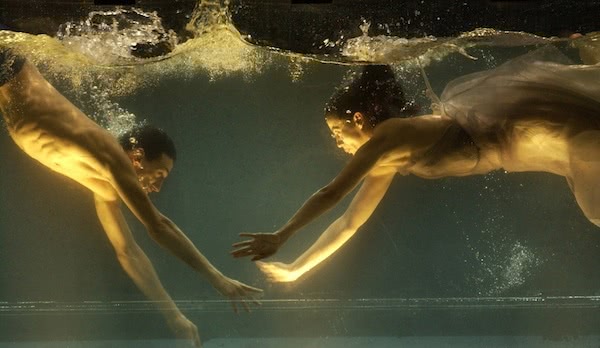It’s not every day a choreographer is asked to “create an opera” and given full reign over what opera and how. But then, it’s not every day when the choreographer you’re asking is Berlin’s Sasha Waltz. The Queen of Contemporary Dance Theatre, as she is known within the modern dance spectrum, chose to stage Henry Purcell’s 17th century romantic-tragedy,Dido & Aeneas.Waltz’s production has been touring for over ten years now with Akademie fЯr Alte Musik Berlin (Academy for Ancient Music Berlin) and will take the Lyric Theatre stage at the forthcoming Sydney Festival.
“I selected this work because, for me, it’s one of history’s major musical pieces and I’m drawn to Baroque music,” says Waltz. It’s a story built on “human themes that everyone can relate to. That is why I think the opera is alive today, even though it was written in another century,” she says. “It’s really a conflict between love and happiness, and your duty, responsibility and loyalty to society and to faith. I think every human being, whether on a big or small scale, undergoes a similar conflict or is chasing it to a certain degree in life.”
So, how did Waltz re-imagine Purcell’s work? “I had the vision to bring together the body of the choir and the dancers to create one entity. I also envisioned that the whole storyline should get carried through a choreographic line almost in a parallel thread to the music – so the vibrato has an extra layer of musicality.”
Surprisingly, this was Waltz’s first choreographed venture with live music. In it, each dancer is accompanied with his or her own singer, making the troupe a 60-strong force. “It’s very thrilling to have a whole group of people singing and dancing at the same time,” she says. “The play is changed through that, and that’s very powerful. It was actually a very exciting process for the dancers to be rehearsing onstage with the singers. As a total, it was an uplifting experience. Challenging, but uplifting.”
What resulted was something extraordinary. “It’s not like your usual repertory production. It challenges the boundaries between the arts and brings them together in a story of not only drama, but lyricism, comedy, and playfulness,” says Waltz. Playfulness. Is that where the gigantic water tank comes in?
“The tank is very small actually,” Waltz says. The promotional image, which shows Dido and Aeneas swimming and dancing deep in water is not purely a visual marketing tool. It’s a literal depiction of the production. “It can barely cross two bodies,” admits Walt, “but it’s still heavy enough for a stage. While it was being built, we went to it with the dancers and costume department to see if the idea worked, if the material worked.”
“[I wanted to] let the image of the Mediterranean Sea and the element of the water act as an opening into this world, into the myth, and into the ancient transforming … we went and tested it and once we had the tank, started to create it step-by-step. The dancers had to train their lungs. Being underwater so long, they had to try to find a way to catch air without destroying the physical lines.”
BY STEPHANIE YIP
Photo: Sebastian Bolesch
Dido & Aeneas presents at Lyric Theatre as part of Sydney Festival 2014 from January 9-27.


































